Nativity-like scene statues are unearthed in the ancient Roman pagan city of Pompeii
Archaeologists have unearthed nativity statues in the ancient ruins of the Roman pagan city of Pompeii.
About thirteen figurines were found in what was once a house, and although the terracotta pieces reflect a Christian scene, they were used in an ancient cult ritual.
The miniature clay sculptures are about six inches high and stand upright on a horizontal surface, likely a shelf that once hung in the house.
Researchers determined that the artifacts must have paid tribute to the cult goddess Cybele, known as the mother of the gods, and Attis, a mortal with whom she fell in love.
Some statues were human figures, while others included a chicken head and a pine cone.
Archaeologists have unearthed nativity-like statues in the ancient ruins of the Roman pagan city of Pompeii. But they were used in an ancient cult ritual. This sculpture probably depicts the goddess Cybele. It shows a mother offering her breast to her child
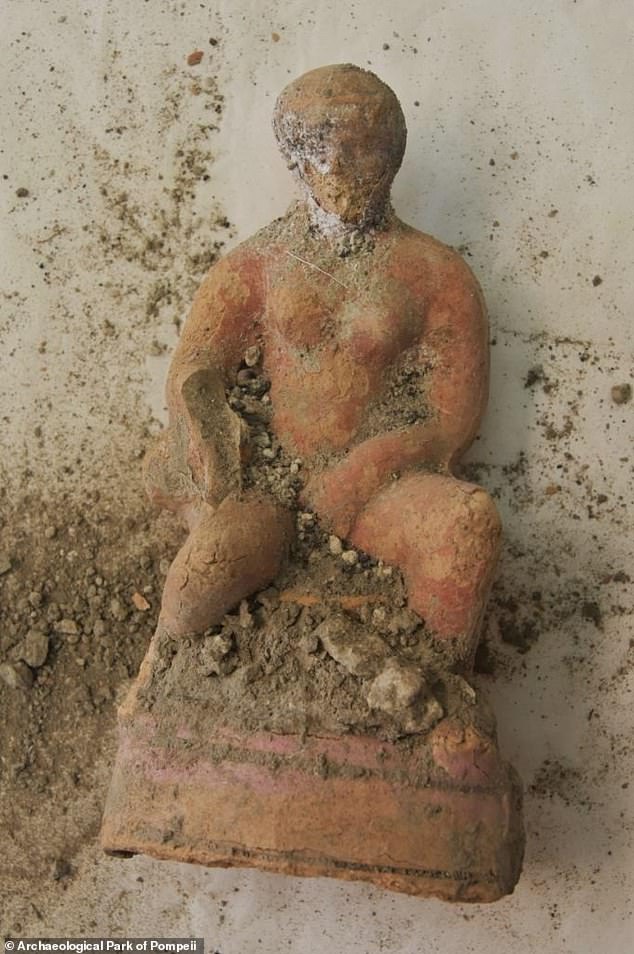
Archaeologists don't know what all the statues mean, but they think they tell the story of Cybele, known as the mother of the gods, and Attis, a mortal she fell in love with. And were used in a cult ritual
Two thousand years ago, Pompeii, located 14 miles southeast of Naples, was a bustling city of about 15,000 before the eruption of Vesuvius destroyed it on August 24, 79 AD. destroyed.
The eruption is believed to have killed 16,000 people in Pompeii and surrounding towns, making it one of the most destructive volcanic eruptions in history.
But buildings, roads, artifacts and even people were preserved under layers of ash. Archaeologists have been uncovering secrets of the ancient city since it was discovered in the late 16th century.
A team on the ground discovered the thirteen figurines this month and said they were reflective of the figures used in the iconic nativity scene.
“While the Christmas crèche was clearly not a tradition in the pagan Roman city, experts believe the statues were arranged in such a way as to be part of an ancient ritual,” archaeologists shared in the announcement.

The pieces were found in a room in a domus (photo). They represent the story of Cybele who drove Attis mad when she learned that he did not love her. Attis sat under a pine tree and castrated himself
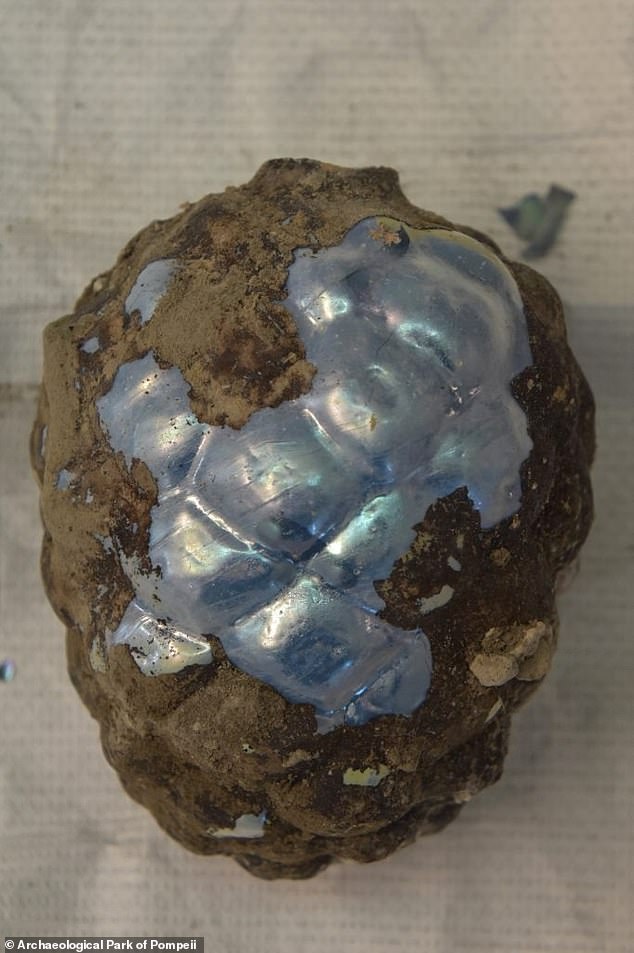
“During ceremonies commemorating the death of Attis, they beat their own chests with pine cones,” archaeologists said, which is likely why a glass pine cone was found at the site.
Cybele was an ancient Phrygian mother goddess whose cult was brought to Rome in the second century BC.
The ancient Romans spread the cult throughout Italy, eventually ending up in Pompeii around the sixth century.
The figure of Attis became part of Roman society by the middle of the first century.
The timeline means the newly discovered figurines are more than 2,000 years old.
The pieces were found in a room in a domus near Leda and de Zwaan's house, where excavation and restoration work is underway.
The name of the house comes from the refined fresco in the bedroom.
The scene full of sensuality represents the intersection between Jupiter, turned into a swan, and Leda, wife of Tindar, king of Sparta.
The statues also tell the tragic love story of Cybele and Attis.
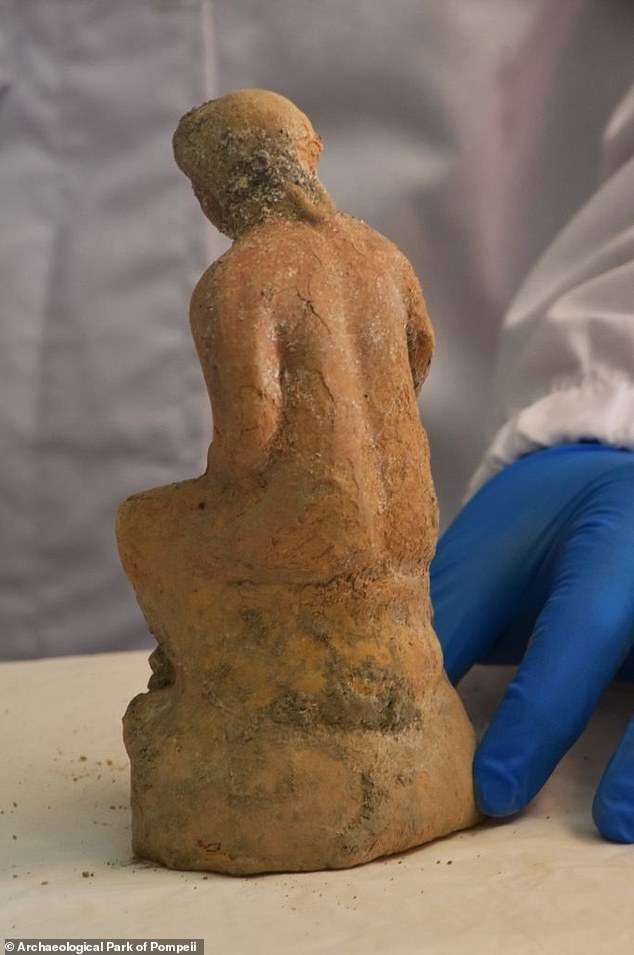
The miniature clay sculptures are about two inches high and stand upright on a horizontal surface, probably a shelf that once hung in the house
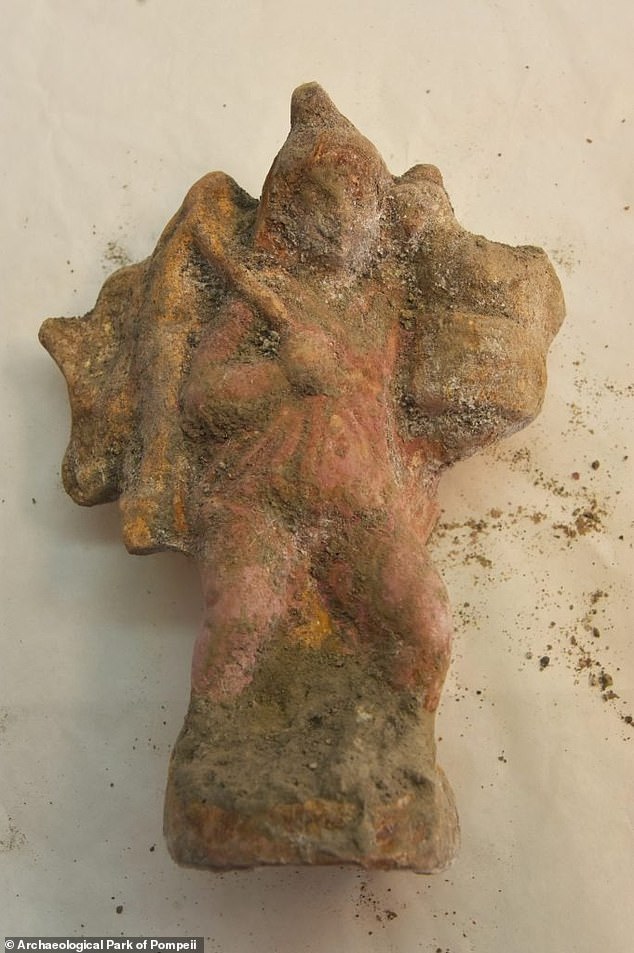
Attis was a shepherd boy and a statue was found in Pompeii showing him carrying an animal on his back
Attis, a shepherd, was said to be a handsome boy with whom Cybele fell madly in love.
However, Attis was unaware of her love and made plans to marry someone else.
The goddess Cybele became insanely jealous and drove Attis mad in revenge. Attis ran madly through the mountains, stopped at the foot of a pine tree and castrated himself.
It is said that his blood produced the first violets on earth, which cared for the spirit of Attis when he died.
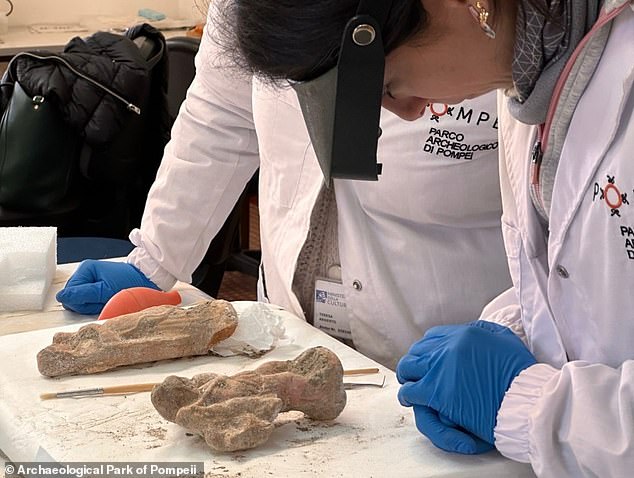
Attis's flesh would have perished if Zeus had not intervened to aid Cybele in his resurrection.
This led to an ancient ritual performed by priests known as Galilee, which was also debunked in tribute to Attis.
One of the statuettes recovered from the rubble of Pompeii was Attis, a shepherd carrying an animal on his back.
The pone cone represented the legend that Attis castrated himself under the pine tree.
“During ceremonies commemorating the death of Attis, they beat themselves on the chest with pine cones,” say archaeologists.
Archaeologists have also discovered a fragment belonging to a female statue, but with the head of a chicken, an offering to Cybele.
Another image showed a mother exposing her breasts to her child, suggesting it was to worship the goddess called the Mother God.
